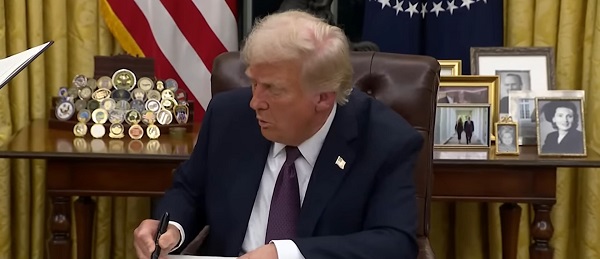Opinion
The repair job at Immigration

|
|
The department’s top bureaucrat answers a critical report, with rare candour
Seven months ago Neil Yeates, a retired former deputy minister of immigration, submitted a report on the organization of the department of Immigration, Refugees and Citizenship Canada to the current deputy minister, Christiane Fox.
Yeates’s 28-page report was blunt, plainspoken, critical but constructive. It said “the current organizational model at IRCC is broken.” At a time of global upheaval and dizzying growth in immigration levels, the department that decides who gets into Canada was no longer “fit for purpose,” he wrote. It was time for “major change.” When? “[T]he advice is to proceed now.”
On Thursday, a copy of Yeates’s report landed in my email inbox.
On Thursday night, Christiane Fox told me she is implementing many of Yeates’s recommendations, and described for me her plans for the department with a level of detail and candour I almost never see in today’s Ottawa.
I’m keeping the paywall off this story because I want it to be widely read. But producing work like this is my full-time job, and I’m able to get stories like this because people understand I’m writing for one of the best audiences in Canadian journalism. If you want to support my full-time work and join that audience, consider subscribing or upgrading to a paid subscription.
Copies of Yeates’s February IRCC Organizational Review Report have been floating around Ottawa because the department began implementing big changes this week. Some of the nearly 13,000 people who work in the department have asked for the rationale behind the changes. Yeates’s 28-page report makes the case succinctly.
Yeates was a top civil servant in Saskatchewan before moving to Ottawa in 2004. He held senior positions in three other departments before becoming deputy minister at Citizenship and Immigration Canada, the department now known as IRCC, where he served from 2009 to his retirement in 2013. That means he was Jason Kenney’s deputy minister for all of Kenney’s time at Immigration, but he was also a Trudeau Foundation mentor if you want to get excited about that instead.
His report’s purpose, he wrote, “is to provide strategic advice to the Deputy Minister on how the department can become a more efficient and effective organization.” After interviewing 36 people inside and outside the department, he decided it was a mess.
‘“[T]he current organizational model at IRCC is broken but is being held together by the hard work and dedication of staff,” he wrote. “At IRCC today department-wide planning is limited and some interviewees suggested it has in fact disappeared completely . There is no multi-year strategic plan, annual plans are not in place consistently across the department and consequently reporting is seen by many as haphazard.”
What the department did have going for it was a decent work environment: “In talking to senior managers at IRCC the culture was universally seen as ‘committed,’ ‘collaborative,’ ‘supportive’ and so on.” The senior managers Yeates interviewed saw this culture as “helping to overcome the shortcomings of the current organizational structure and of the weakness of the governance and management systems.”
The immigration department has always been the main portal between a messy world and an anxious nation. Lately the world had grown messier, Yeates noted, and the demands on the department were starting to hurt. “[T]he operating environment, both nationally and internationally, has grown ever more complex, unstable and frenetic,” he wrote.
In response, “the department has grown exponentially,” from 5,217 staff when Yeates left it in 2013 to12,721 this year, an expansion of 144%. The “Ex complement,” the department’s management cadre, grew from 135 to 227 over the same period, a smaller increase of 68%. That might explain why the department’s managers are so stressed, Yeates speculated. At any rate, the department’s structure was conceived for a much smaller staff and caseload.
To catch up, Yeates proposed big reform in four areas: Organizational Structure, Governance, Management Systems and Culture. He cautioned that tinkering with only one or a couple of those areas wouldn’t have the effect that a “Big Bang,” however difficult, would achieve.
The big problem in Organizational Structure was that the department isn’t organized along business lines: that one of the world’s leading destinations for asylum and humanitarian immigration doesn’t have an assistant deputy minister for asylum, for instance. The obvious challenge was that in a hectic world there will certainly be more crises, like those of recent years. “Should IRCC have a permanent ‘response team’ in place? The short answer is no.” Between crises that team of experienced trouble-shooters would just be twirling their thumbs. Instead Yeates proposed better contingency planning, including lessons learned from other crisis-management departments such as National Defence.
Under Governance, Yeates found a proliferation of over-large committees sitting through endless presentations and not really sure, at the end of each, whether they had decided anything. “Most of the actual decision-making occurs in DMO/ADM bilats,” he wrote, referring to meetings between the Deputy Minister’s office and a given Assistant Deputy Minister.
The section of Yeates’s report that deals with Management Systems reads like a parable of contemporary Ottawa: a “series of periodic crises” that somehow nobody anticipated, “descend[ing] into ‘issues management.’” What’s needed is much better planning and reporting, he wrote. When he was running the department barely a decade ago, every part of the department was reporting on progress against targets every three months. That system has fallen by the wayside. A department that’s obsessed with its “priorities” or with the to-do items in “a minister’s mandate letters” is “inherently limited” and guaranteed to be side-swiped by events intruding from the real world, he wrote.
The upshot of all this tunnel vision was that the department was expecting to “lapse,” or leave unspent, $368 million in projected spending for the year underway, even as passport-related spending was projecting a $238 million deficit.
Yeates’s report closed with the sort of plea that’s traditional in this sort of exercise, essentially pleading not to be ignored. “IRCC is at a crossroads and as Yogi Berra famously quipped ‘when you come to a fork in the road, take it,’” he wrote. Change is hard, but a “substantial majority” of the people he interviewed told him it was overdue.

Neil Yeates and Christiane Fox.
And that’s where the report ends. I had to decide what to do with it. First, always consider the possibility that you’ve been handed a fake report, or the first draft of something that was later amended beyond recognition. I emailed the office of Immigration Minister Marc Miller looking for comment. They handed me off to the civil servants in the department’s communications staff. But I also emailed Christiane Fox, the deputy minister, offering her a chance to comment. This is the sort of chance that people in Ottawa usually don’t touch with a barge pole.
But Fox called me on Thursday night and responded in detail. I asked: was the conversation on the record? She thought out loud for a few seconds, working her way up to a “Yes.” I don’t want to belabour this, but that answer is very rare these days.
The other way you can help me, besides subscribing, is to tell people about the work I’m doing here. Share this story with friends and family, or post it to your social networks. Let people know what we’re building here.
Christiane Fox had been the DM at Indigenous Services for all of 22 months when she was sent to run IRCC in July of 2022. The new job “felt like crisis”: the department was sending weekly updates to an ad hoc committee of ministers whose job was to fix months of chaos in airports and passport offices.
“They felt like they were under duress,” Fox said. “Everyone was exhausted.” New staff were just “tacked on when there was a problem,” including the creation of an entirely new sector for Afghanistan. Fox talked about this with some of the most experienced public servants in town, including Yeates and Richard Dicerni, Fox’s former DM from her days as a young public servant at Industry, who passed away this summer and whose contribution to public life in Canada is hard to measure.
“I kind of said, ‘We’ve got to make some changes. And I don’t want to do it overnight. But I also don’t want to spend two years figuring out what a new model could look like.’” Yeates, whom she didn’t know well but who knew the department’s history, seemed like solid outside counsel.
While Yeates was doing his thing, Fox and the previous immigration minister, Sean Fraser, were consulting — with “business leaders, academics and clients” — about the department’s future. By June of this year, she had a plan, based on Yeates’s report and those consultations. She’s been rolling it out since then, from top managers on down, and on Wednesday, by way of explanation for the changes that are coming, she sent the Yeates report to enough people that I got a copy. A department-wide meeting is scheduled for this coming week.
What’s changing? “The model is now just more of a business-line model,” she said, reflecting Yeates’s first big recommendation.
So there’ll be a stronger crisis-planning sector. In a world that keeps producing humanitarian crises, the goal is to learn lessons for next time from Ukraine, Afghanistan and elsewhere. “Most importantly, we’ll have a group dedicated to thinking about these issues, planning for crisis.” It won’t eliminate the need to “surge,” or quickly add new staff when something flares up. “But in the past, we ended up surging so much that all of our other business lines suffered every time there was a crisis.” The goal now is to get better at anticipating so the department’s regular work doesn’t suffer.
“Asylum and Refugee. There was no Asylum ADM,” she said, reflecting another Yeates critique. “This is probably the thing that causes me the most heartache, in terms of, how are we going to deal with this as a country, globally? What are some of the tools that we have? How do we support the most vulnerable? How do we have a system that is fast and fair? So Asylum and Refugee will now be a sector within the department.”
In addition, there’ll be a sector focused on Economic Immigration and Family. “The business community didn’t really feel like we were actually talking to them about labour shortages, about skills missions, about what is the talent that the country needs.” And a sector on francophone immigration, identifying French-speaking sources of immigration and taking into account the needs of French-speaking newcomers.
“Other sectors remain kind of consistent. Like, we’ve always had a focus on border and security, but we will now have a team that’s really migration integrity, national security, fraud prevention, and looking at case management in that context.”
Fox said she’s working on more of a “client focus” in the department’s work. “When I joined the department I remember, my first few weeks, thinking, ‘Everybody talks about inventory and backlog and process.’ But I didn’t feel clients and people were at the forefront.” This may sound like a semantic difference. But anyone who’s been treated as inventory and backlog can testify to the potential value in any reform that restores a measure of humanity to recipients of government service.
I’ve been arguing for months here that simply acknowledging problems and identifying possible solutions is better communications than the happy-face sloganeering that passes for so much of strategic comms these days. Here, quite by accident, I’d stumbled across somebody who seems to have had similar thoughts. (There’s an irony here, because Fox’s CV includes a long stint as a director of strategic communications in the Privy Council Office.)
“There will be things that will come up,” Fox said, “that may not be as smooth a transition as we thought, or maybe a bit clunky, that we need to rethink. What we’ve told the employees is, it won’t be perfect. We needed to change, we’re going to change, but there’s going to be room for conversation around issues that arise as we go through this process.”
To subscribe to the full Paul Wells experience, upgrade your subscription.
Freedom Convoy
Court Orders Bank Freezing Records in Freedom Convoy Case

|
A Canadian court has ordered the release of documents that could shed light on how federal authorities and law enforcement worked together to freeze the bank accounts of a protester involved in the Freedom Convoy.
Both the RCMP and TD Bank are now required to provide records related to Evan Blackman, who took part in the 2022 demonstrations and had his accounts frozen despite not being convicted of any crime at the time.
The Justice Centre for Constitutional Freedoms (JCCF) announced the Ontario Court of Justice ruling. The organization is representing Blackman, whose legal team argues that the actions taken against him amounted to a serious abuse of power.
“The freezing of Mr. Blackman’s bank accounts was an extreme overreach on the part of the police and the federal government,” said his lawyer, Chris Fleury. “These records will hopefully reveal exactly how and why Mr. Blackman’s accounts [were] frozen.”
Blackman was arrested during the mass protests in Ottawa, which drew thousands of Canadians opposed to vaccine mandates and other pandemic-era restrictions.
Although he faced charges of mischief and obstructing police, those charges were dismissed in October due to a lack of evidence. Despite this, prosecutors have appealed, and a trial is set to begin on August 14.
At the height of the protests, TD Bank froze three of Blackman’s accounts following government orders issued under the Emergencies Act. Then-Prime Minister Justin Trudeau had invoked the act to grant his government broad powers to disrupt the protest movement, including the unprecedented use of financial institutions to penalize individuals for their support or participation.
In 2024, a Federal Court Justice ruled that Trudeau’s decision to invoke the act had not been justified.
Blackman’s legal team plans to use the newly released records to demonstrate the extent of government intrusion into personal freedoms.
According to the JCCF, this case may be the first in Canada where a criminal trial includes a Charter challenge over the freezing of personal bank accounts under emergency legislation.
|
Alberta
‘Far too serious for such uninformed, careless journalism’: Complaint filed against Globe and Mail article challenging Alberta’s gender surgery law

Macdonald Laurier Institute challenges Globe article on gender medicine
The complaint, now endorsed by 41 physicians, was filed in response to an article about Alberta’s law restricting gender surgery and hormones for minors.
On June 9, the Macdonald-Laurier Institute submitted a formal complaint to The Globe and Mail regarding its May 29 Morning Update by Danielle Groen, which reported on the Canadian Medical Association’s legal challenge to Alberta’s Bill 26.
Written by MLI Senior Fellow Mia Hughes and signed by 34 Canadian medical professionals at the time of submission to the Globe, the complaint stated that the Morning Update was misleading, ideologically slanted, and in violation the Globe’s own editorial standards of accuracy, fairness, and balance. It objected to the article’s repetition of discredited claims—that puberty blockers are reversible, that they “buy time to think,” and that denying access could lead to suicide—all assertions that have been thoroughly debunked in recent years.
Given the article’s reliance on the World Professional Association for Transgender Health (WPATH), the complaint detailed the collapse of WPATH’s credibility, citing unsealed discovery documents from an Alabama court case and the Cass Review’s conclusion that WPATH’s guidelines—and those based on them—lack developmental rigour. It also noted the newsletter’s failure to mention the growing international shift away from paediatric medical transition in countries such as the UK, Sweden, and Finland. MLI called for the article to be corrected and urged the Globe to uphold its commitment to balanced, evidence-based journalism on this critical issue.
On June 18, Globe and Mail Standards Editor Sandra Martin responded, defending the article as a brief summary that provided a variety of links to offer further context. However, the three Globe and Mail news stories linked to in the article likewise lacked the necessary balance and context. Martin also pointed to a Canadian Paediatric Society (CPS) statement linked to in the newsletter. She argued it provided “sufficient context and qualification”—despite the fact that the CPS itself relies on WPATH’s discredited guidelines. Notwithstanding, Martin claimed the article met editorial standards and that brevity justified the lack of balance.
MLI responded that brevity does not excuse misinformation, particularly on a matter as serious as paediatric medical care, and reiterated the need for the Globe to address the scientific inaccuracies directly. MLI again called for the article to be corrected and for the unsupported suicide claim to be removed. As of this writing, the Globe has not responded.
Letter of complaint
June 9, 2025
To: The Globe and Mail
Attn: Sandra Martin, standards editor
CC: Caroline Alphonso, health editor; Mark Iype, deputy national editor and Alberta bureau chief
To the editors;
Your May 29 Morning Update: The Politics of Care by Danielle Groen, covering the Canadian Medical Association’s legal challenge to Alberta’s Bill 26, was misleading and ideologically slanted. It is journalistically irresponsible to report on contested medical claims as undisputed fact.
This issue is far too serious for such uninformed, careless journalism lacking vital perspectives and scientific context. At stake is the health and future of vulnerable children, and your reporting risks misleading parents into consenting to irreversible interventions based on misinformation.
According to The Globe and Mail’s own Journalistic Principles outlined in its Editorial Code of Conduct, the credibility of your reporting rests on “solid research, clear, intelligent writing, and maintaining a reputation for honesty, accuracy, fairness, balance and transparency.” Moreover, your principles go on to state that The Globe will “seek to provide reasonable accounts of competing views in any controversy.” The May 29 update violated these principles. There is, as I will show, a widely available body of scientific information that directly contests the claims and perspectives presented in your article. Yet this information is completely absent from your reporting.
The collapse of WPATH’s credibility
The article’s claim that Alberta’s law “falls well outside established medical practice” and could pose the “greatest threat” to transgender youth is both false and inflammatory. There is no global medical consensus on how to treat gender-distressed young people. In fact, in North America, guidelines are based on the Standards of Care developed by the World Professional Association for Transgender Health (WPATH)—an organization now indisputably shown to place ideology above evidence.
For example, in a U.S. legal case over Alabama’s youth transition ban, WPATH was forced to disclose over two million internal emails. These revealed the organization commissioned independent evidence reviews for its latest Standards of Care (SOC8)—then suppressed those reviews when they found overwhelmingly low-quality evidence. Yet WPATH proceeded to publish the SOC8 as if it were evidence-based. This is not science. It is fraudulent and unethical conduct.
These emails also showed Admiral Rachel Levine—then-assistant secretary for Health in the Biden administration—pressured WPATH to remove all lower age recommendations from the guidelines—not on scientific grounds, but to avoid undermining ongoing legal cases at the state level. This is politics, not sound medical practice.
The U.K.’s Cass Review, a major multi-year investigation, included a systematic review of the guidelines in gender medicine. A systematic review is considered the gold standard because it assesses and synthesizes all the available research in a field, thereby reducing bias and providing a large comprehensive set of data upon which to reach findings. The systematic review of gender medicine guidelines concluded that WPATH’s standards of care “lack developmental rigour” and should not be used as a basis for clinical practice. The Cass Review also exposed citation laundering where medical associations endlessly recycled weak evidence across interlocking guidelines to fabricate a false consensus. This led Cass to suggest that “the circularity of this approach may explain why there has been an apparent consensus on key areas of practice despite the evidence being poor.”
Countries like Sweden, Finland, and the U.K. have now abandoned WPATH and limited or halted medicalized youth transitions in favour of a therapy-first approach. In Norway, UKOM, an independent government health agency, has made similar recommendations. This shows the direction of global practice is moving away from WPATH’s medicalized approach—not toward it. As part of any serious effort to “provide reasonable accounts of competing views,” your reporting should acknowledge these developments.
Any journalist who cites WPATH as a credible authority on paediatric gender medicine—especially in the absence of contextualizing or competing views—signals a lack of due diligence and a fundamental misunderstanding of the field. It demonstrates that either no independent research was undertaken, or it was ignored despite your editorial standards.
Puberty blockers don’t ‘buy time’ and are not reversible
Your article repeats a widely debunked claim: that puberty blockers are a harmless pause to allow young people time to explore their identity. In fact, studies have consistently shown that between 98 per cent and 100 per cent of children placed on puberty blockers go on to take cross-sex hormones. Before puberty blockers, most children desisted and reconciled with their birth sex during or after puberty. Now, virtually none do.
This strongly suggests that blocking puberty in fact prevents the natural resolution of gender distress. Therefore, the most accurate and up-to-date understanding is that puberty blockers function not as a pause, but as the first step in a treatment continuum involving irreversible cross-sex hormones. Indeed, a 2022 paper found that while puberty suppression had been “justified by claims that it was reversible … these claims are increasingly implausible.” Again, adherence to the Globe’s own editorial guidelines would require, at minimum, the acknowledgement of the above findings alongside the claims your May 29 article makes.
Moreover, it is categorically false to describe puberty blockers as “completely reversible.” Besides locking youth into a pathway of further medicalization, puberty blockers pose serious physical risks: loss of bone density, impaired sexual development, stunted fertility, and psychosocial harm from being developmentally out of sync with peers. There are no long-term safety studies. These drugs are being prescribed to children despite glaring gaps in our understanding of their long-term effects.
Given the Globe’s stated editorial commitment to principles such as “accuracy,” the crucial information from the studies linked above should be provided in any article discussing puberty blockers. At a bare minimum, in adherence to the Globe’s commitment to “balance,” this information should be included alongside the contentious and disputed claims the article makes that these treatments are reversible.
No proof of suicide prevention
The most irresponsible and dangerous claim in your article is that denying access to puberty blockers could lead to “depression, self-harm and suicide.” There is no robust evidence supporting this transition-or-suicide narrative, and in fact, the findings of the highest-quality study conducted to date found no evidence that puberty suppression reduces suicide risk.
Suicide is complex and attributing it to a single cause is not only false—it violates all established suicide reporting guidelines. Sensationalized claims like this risk creating contagion effects and fuelling panic. In the public interest, reporting on the topic of suicide must be held to the most rigorous standards, and provide the most high-quality and accurate information.
Euphemism hides medical harm
Your use of euphemistic language obscures the extreme nature of the medical interventions being performed in gender clinics. Calling double mastectomies for teenage girls “paediatric breast surgeries for gender-affirming reasons” sanitizes the medically unnecessary removal of a child’s healthy organs. Referring to phalloplasty and vaginoplasty as “gender-affirming surgeries on lower body parts” conceals the fact that these are extreme operations involving permanent disfigurement, high complication rates, and often requiring multiple revisions.
Honest journalism should not hide these facts behind comforting language. Your reporting denies youth, their parents, and the general public the necessary information to understand the nature of these interventions. Members of the general public rely greatly on the news media to equip them with such information, and your own editorial standards claim you will fulfill this core responsibility.
Your responsibility to the public
As a flagship Canadian news outlet, your responsibility is not to amplify activist messaging, but to report the truth with integrity. On a subject as medically and ethically fraught as paediatric gender medicine, accuracy is not optional. The public depends on you to scrutinize claims, not echo ideology. Parents may make irreversible decisions on behalf of their children based on the narratives you promote. When reporting is false or ideologically distorted, the cost is measured in real-world harm to some of our society’s most vulnerable young people.
I encourage the Globe and Mail to publish an updated version on this article in order to correct the public record with the relevant information discussed above, and to modify your reporting practices on this matter going forward—by meeting your own journalistic standards—so that the public receives balanced, correct, and reliable information on this vital topic.
Trustworthy journalism is a cornerstone of public health—and on the issue of paediatric gender medicine, the stakes could not be higher.
Sincerely,
Mia Hughes
Senior Fellow, Macdonald-Laurier Institute
Author of The WPATH Files
The following 41 physicians have signed to endorse this letter:
Dr. Mike Ackermann, MD
Dr. Duncan Veasey, Psy MD
Dr. Rick Gibson, MD
Dr. Benjamin Turner, MD, FRCSC
Dr. J.N. Mahy, MD, FRCSC, FACS
Dr. Khai T. Phan, MD, CCFP
Dr. Martha Fulford, MD
Dr. J. Edward Les, MD, FRCPC
Dr. Darrell Palmer, MD, FRCPC
Dr. Jane Cassie, MD, FRCPC
Dr. David Lowen, MD, FCFP
Dr. Shawn Whatley, MD, FCFP (EM)
Dr. David Zitner, MD
Dr. Leonora Regenstreif, MD, CCFP(AM), FCFP
Dr. Gregory Chan, MD
Dr. Alanna Fitzpatrick, MD, FRCSC
Dr. Chris Millburn, MD, CCFP
Dr. Julie Curwin, MD, FRCPC
Dr. Roy Eappen, MD, MDCM, FRCP (c)
Dr. York N. Hsiang, MD, FRCSC
Dr. Dion Davidson, MD, FRCSC, FACS
Dr. Kevin Sclater, MD, CCFP (PC)
Dr. Theresa Szezepaniak, MB, ChB, DRCOG
Dr. Sofia Bayfield, MD, CCFP
Dr. Elizabeth Henry, MD, CCFP
Dr. Stephen Malthouse, MD
Dr. Darrell Hamm, MD, CCFP
Dr. Dale Classen, MD, FRCSC
Dr. Adam T. Gorner, MD, CCFP
Dr. Wesley B. Steed, MD
Dr. Timothy Ehmann, MD, FRCPC
Dr. Ryan Torrie, MD
Dr. Zachary Heinricks, MD, CCFP
Dr. Jessica Shintani, MD, CCFP
Dr. Mark D’Souza, MD, CCFP(EM), FCFP*
Dr. Joanne Sinai, MD, FRCPC*
Dr. Jane Batt, MD*
Dr. Brent McGrath, MD, FRCPC*
Dr. Leslie MacMillan MD FRCPC (emeritus)*
Dr. Ian Mitchell, MD, FRCPC*
Dr. John Cunnington, MD
*Indicates physician who signed following the letter’s June 9 submission to the Globe and Mail, but in advance of this letter being published on the MLI website.
-

 MAiD2 days ago
MAiD2 days agoCanada’s euthanasia regime is already killing the disabled. It’s about to get worse
-

 Daily Caller17 hours ago
Daily Caller17 hours agoUSAID Quietly Sent Thousands Of Viruses To Chinese Military-Linked Biolab
-

 Alberta13 hours ago
Alberta13 hours ago‘Far too serious for such uninformed, careless journalism’: Complaint filed against Globe and Mail article challenging Alberta’s gender surgery law
-

 Censorship Industrial Complex1 day ago
Censorship Industrial Complex1 day agoCanadian pro-freedom group sounds alarm over Liberal plans to revive internet censorship bill
-

 Fraser Institute1 day ago
Fraser Institute1 day agoBefore Trudeau average annual immigration was 617,800. Under Trudeau number skyrocketted to 1.4 million from 2016 to 2024
-

 Daily Caller2 days ago
Daily Caller2 days ago‘I Know How These People Operate’: Fmr CIA Officer Calls BS On FBI’s New Epstein Intel
-

 Economy1 day ago
Economy1 day agoThe stars are aligning for a new pipeline to the West Coast
-

 Automotive14 hours ago
Automotive14 hours agoFederal government should swiftly axe foolish EV mandate





